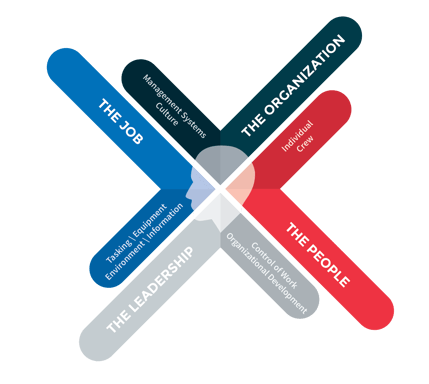Human Factors as a Driver for Improving Operational Performance in High-Reliability Organizations
On March 23rd of 2005, a crew at BP’s Texas City refinery worked to restart the plant unaware that 15 people would never see their families again. More than 200 lives would be deeply changed recovering from injuries in what would become the deadliest industrial accident in US history. An early investigation assigned the cause to negligence of the front-line operators and supervisors by failing to follow the procedure. What came to light later was shocking and hard to grasp. The lessons from this accident offer remarkable insight into understanding human influences in operating systems.
Recent studies indicate that close to 90% of incidents and accidents involve human factors. By exposing and analyzing human factors in their operations, organizations can take corrective action to prevent reoccurrence and improve operational safety and efficiency.
Background on Human Factors
Early in the 20th century, in response to similar events both catastrophic and minor in terms of outcome, a community of interest formed with the objective to understand the human influence on systems in order to achieve consistent and reliable outcomes. An academic discipline, Human Factors and Ergonomics, emerged applying scientific methods, statistical analysis and psychology to study human performance and the man-machine interface.
After decades of published research, the solution still eludes us. More recently, the concept of a High Reliability Organization (HRO) aims at the reliability of human performance in context with the operational and economic risks to an organization where failures can have a devastating and unacceptable impact on the people, the equipment and the environment.
The term human reliability provokes diverse reactions depending on perspective. In some views, they are almost a contradiction in terms. The basic pursuit of human reliability is to form a system involving human influence and interaction with equipment and an environment that responds predictably and reliably in order to achieve its designed function or objective.
With all the research, operational experience and lessons, the challenge remains to translate key principles of human factors into the operational setting. Today, organizations are seeing a plateau in safety progress from conventional safety and risk management programs.
Changing Our Approach
Effective management of human factors begins with a philosophical change in the way we approach the human element of our operations. People do not set out to cause failure, their desire is to succeed. In fact, humans have an ability which no other system does - adapt to changing conditions, system design variance and unanticipated circumstances.
A system design view approaches the operation linearly and plans reliability into components in order to extrapolate system and human reliability. Conversely, in the field, operators and teams seek with good intention to balance the rivalry between preservation [safety] and production [productivity].
People operating tools and equipment are provided information from which they act; however, their actions are influenced and guided by conflicting objectives within an operational setting that include physical, technological, regulatory and procedural environments. Within their capability for good judgement they make choices that lead to outcomes, both positive and negative. It is within this multidimensional concurrence we can influence the reliability of human performance. Understanding this concurrence directs us away from blaming individuals and towards determining why the system responded the way it did in order to modify the organization.

Error and Failure – Are They the Same?
Historically, individuals and groups of people with a clear vision and good intention to achieve success have overlooked a keystone truth. Their belief is that error is failure when in fact it is not. In truth, human error can be an organizational resource for creating reliability, improving operations and attaining resilience. We presume wrongly that if we can eliminate error, we will eliminate failure. This mindset permeates the very fabric of an organization and creates friction between leadership and delivery.
Resilience and reliability emerge when we understand error cannot be eliminated. To the contrary, efforts aimed at eradicating error are not only ineffective, they often degrade performance. Error produces resiliency when it is spotted, studied and learned from. An environment that embraces error in order to learn from it and minimize its effect will foster problem-solving, collaboration and a deep desire for excellence.
How We Connect
After decades of studying organizational behavior, professionals at Vetergy have observed the profound struggle between management trying to get operators to perform reliably and skilled workers attempting to get leadership to understand the operational realities they face.
At Vetergy Group, we embrace error instead of evading it. Sources of error are minimized. Programs focus on recognizing error in order to disturb the pathway of error from becoming failure.
Have some ideas on this thought leadership article you'd like to share? Let us hear from you below!



 1200 Corporate Drive, Ste 170
1200 Corporate Drive, Ste 170




